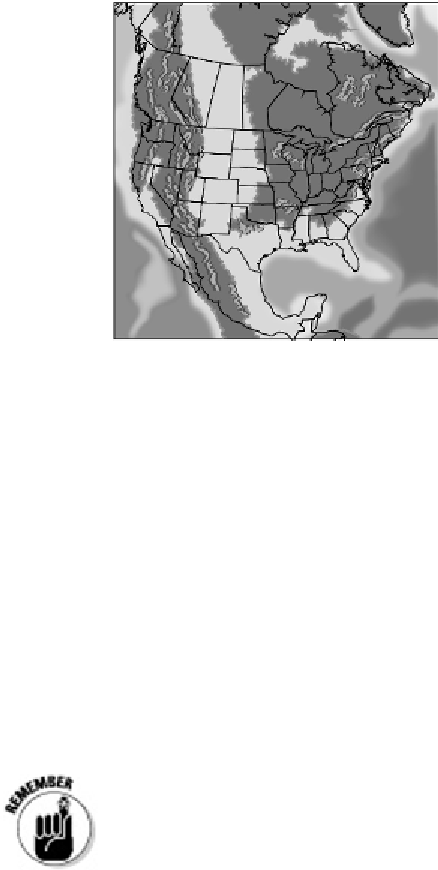Geology Reference
In-Depth Information
Repopulating the Seas after Extinction
The breakup of Pangaea and resulting changes in global environments were driving
forces in the evolutionary story of the Mesozoic. The previous era ended with a mass ex-
tinction that wiped out most of the marine invertebrate populations. A
mass extinction
is
when numerous species and even groups of species are killed off. The end-Permian ex-
tinction that preceded the Mesozoic is the largest mass extinction event but only one of
many mass extinction events in earth's history; I describe all of them in Chapter 22.
At the beginning of the Mesozoic, many of the species that had been filling the oceans
were no longer around. Separate landmasses and new oceans provided new habitats to
be filled by creatures with the most advantageous characteristics.
When organisms move into new habitats, they may evolve different character-
istics to best fit the new habitat. Scientists call this process
adaptive radiation.
The result is that a group of animals that may have previously been one species
restricted to a specific environment or region now has multiple species filling all
different environments and regions, each one with characteristics uniquely suited
to its habitat. Adaptive radiation leads to
diversification
as the species develop
new characteristics.
In the early Mesozoic, life in the oceans rebounded from the end-Permian extinction in
some interesting ways. For example, the number of different types of burrowing animals


